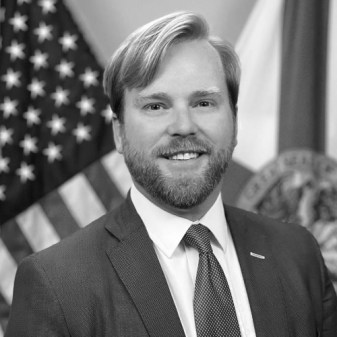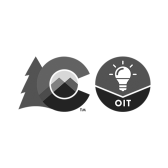Frank Winters, geographic information officer of New York

What lesson will you take with you from the pandemic?
The pandemic was super interesting. GIS was front-page news. People were looking at whatever your news channel is, and you’re looking at a dashboard that was GIS-based. And that’s great.
Yet, nationwide, a bunch of us were looking around going, “Oh, we might not be being asked for our most impactful contribution,” because the effects of the pandemic, its spread, and the measures we take to mitigate it, like getting people vaccinated, those are best understood in the context of space and time. Yet, if we look at all of those phenomena at a state or a county level, we are missing the real neighborhood-based differences, the nuances, that really are the things that we need to take action on, we’ve kind of melded together and smoothed out all the interesting phenomena. So if a particular neighborhood, say a census tract, is experiencing a higher rate [of infection] than its neighbors. Well, why is that? What’s going on there? Oh, you know, there’s a different language spoken there, or there’s less engagement in government there? Or, what about an area that is doing really well with getting their vaccinations? What’s working there? How are they getting the message? So it’s all those neighborhood-to-neighborhood distinctions.
If we look at the phenomena we’re trying to map, and we remove individuals’ privacy concerns from it, and now that’s part of an aggregate. Then if we do that at a unit of geography, where we also have lots of other rich information, we can look at all the census demographic data, figure out what’s going on there. That ceiling is almost infinite.
While we’re grateful that GIS is front-page news, and we’re having a big impact, this group is not content for very long — we always want to make a bigger impact and we can always see more collectively. It’s one of these things that it’s not going to ratchet back when the pandemic is over, we’ll be all the more ready for the next one.
What’s an underappreciated IT practice or technology that helped you during the pandemic?
So we’ve got lots of data. But it’s a matter of packaging that so that it scales to millions or billions of people. If I make GIS data work on my desk, that’s kind of a ‘who cares, that’s just one guy,’ right? But if I can make GIS data publicly available in a way that we’ve removed the barriers for its implementation, its use at scale, then we’re really moving the dial. So making data as publicly available as possible.
With the GIS web services that my team is putting out, we’re on track, potentially — we may or may not get there — I don’t really care if we do but just to give you a sense of the scale, — we’re potentially going to answer a billion GIS web service requests in 2021. So that’s kind of a big number. We just liked the fact that people from all different disciplines are finding their way to those services and rolling it in. That includes many different types of data, but just to hone in on something like parcel data — we have been told that municipalities or regions have been eliminated from consideration for economic development activities specifically because their data was not publicly available. People aren’t making a phone call to say, hey, do you have a property that I can develop? They’re doing their searches, they’re doing their GIS analysis where they can find the data. They don’t need to make a phone call, right? They got their answer without making a phone call. If you leave your data behind a password, you’ve left your constituents out of a segment of the economy. That’s the kind of way we’re thinking is how do we make this stuff scale at a point that moves the dial on the economy and the effect and the efficiency of our whole society? And it doesn’t take much of a percentage change on that kind of scale to really pay for everything we’re doing over and over again.






